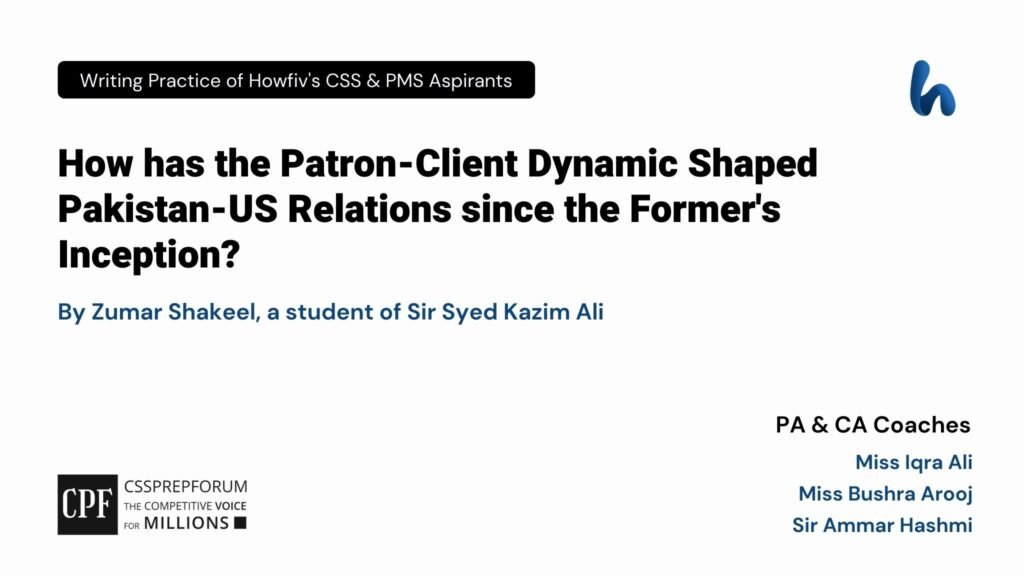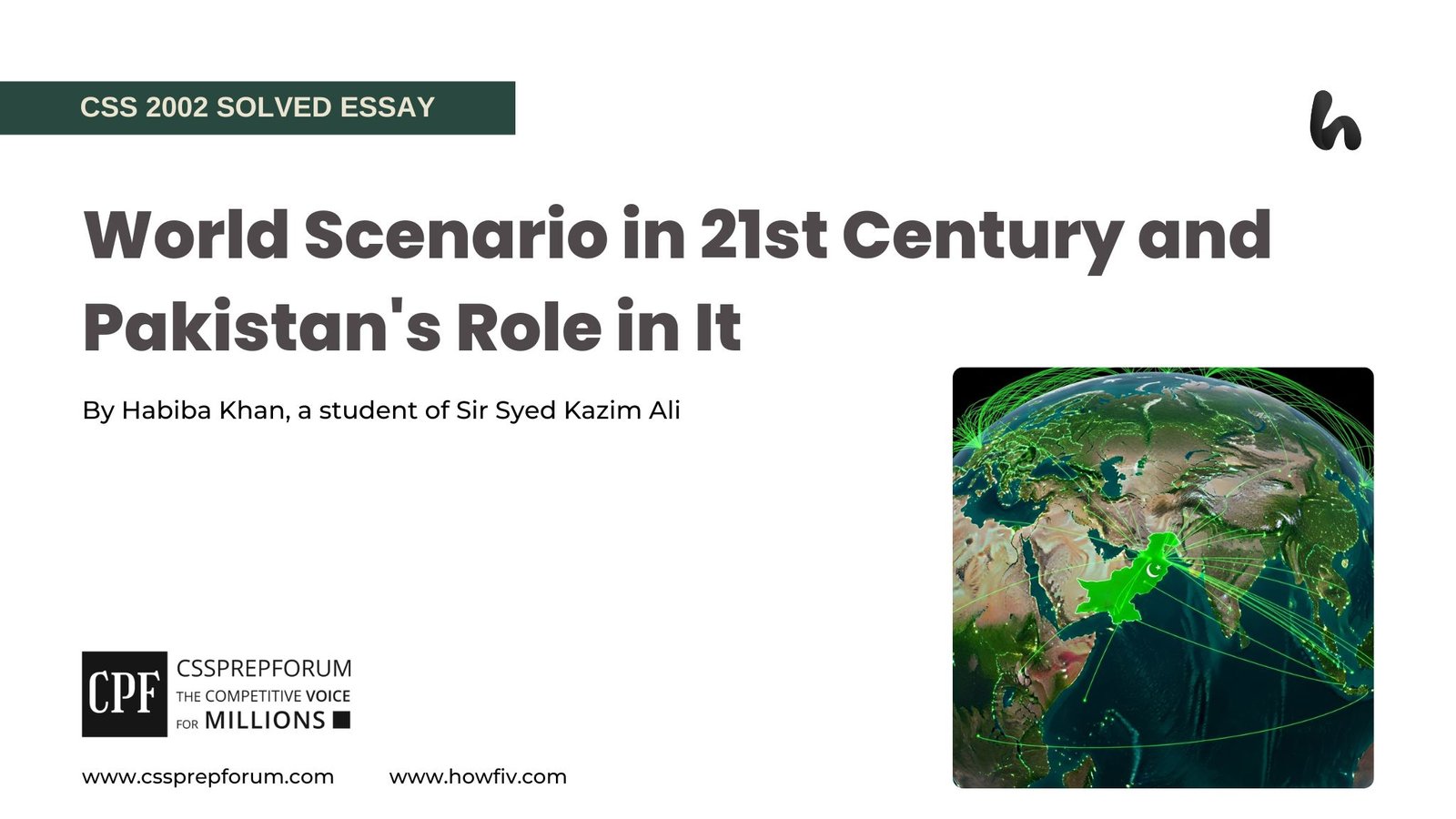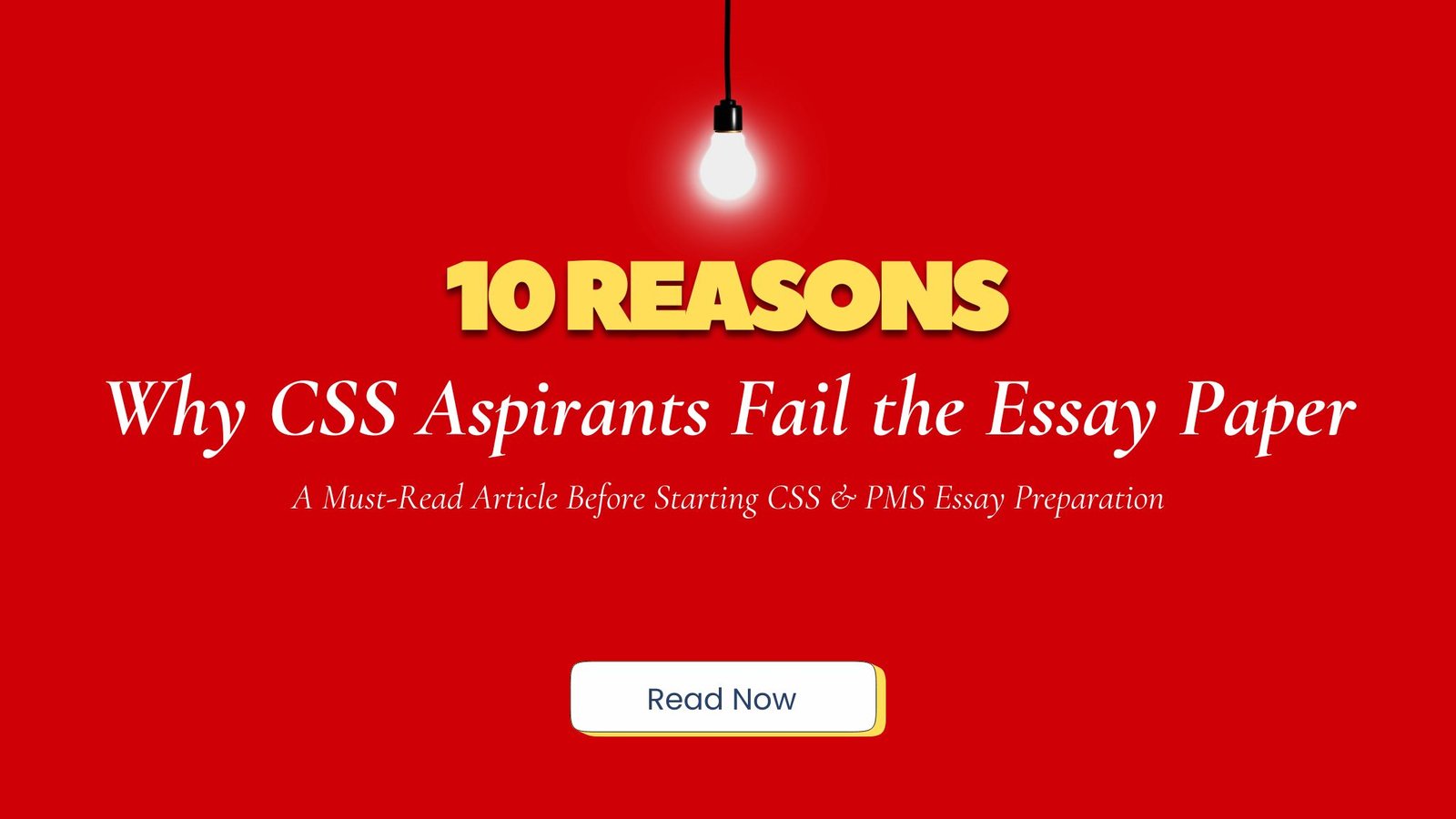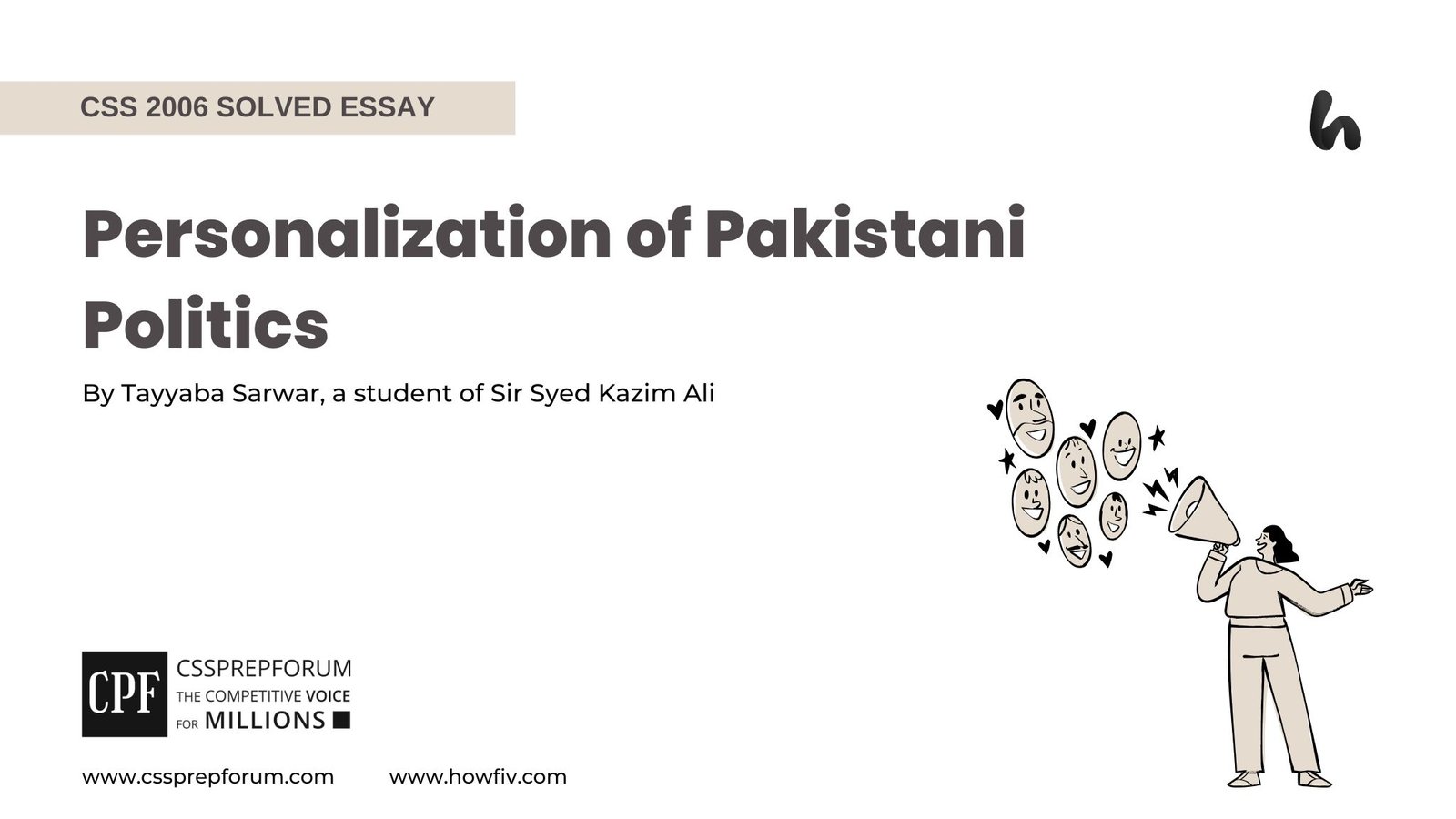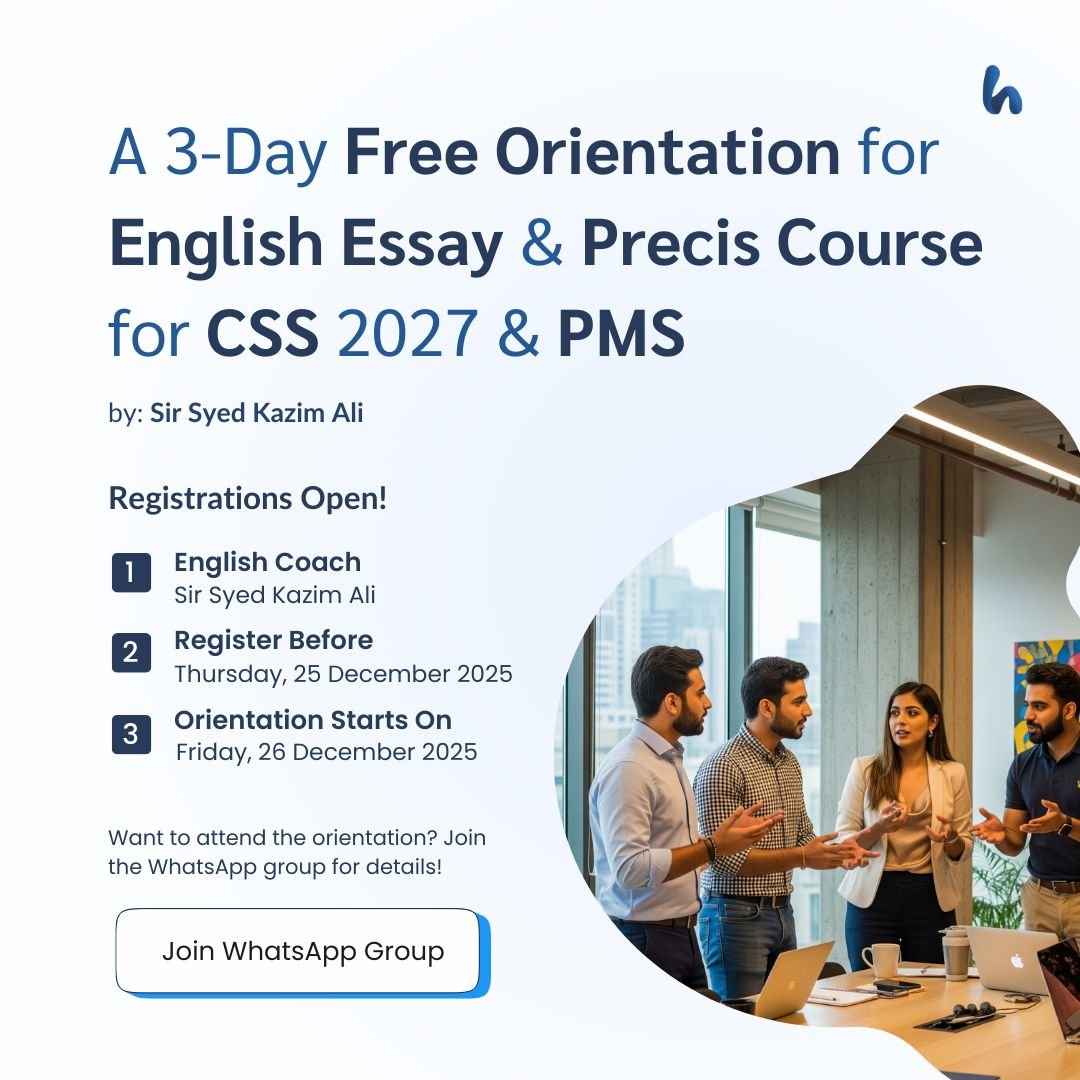CSS Pakistan Affairs | Patron-Client Dynamics of Pakistan-US Relations
The following question of CSS Pakistan Affairs is solved by Zumar Shakeel under the supervision of Howfiv’s Pakistan Affairs and Current Affairs Coaches. She learnt how to attempt 20 marks question and essay writing from Sir Syed Kazim Ali, Pakistan’s best CSS and PMS English essay and precis teacher with the highest success rate of his students. This solved past paper question is attempted on the pattern taught by Sir to his students, scoring the highest marks in compulsory and optional subjects for years, and uploaded to help aspirants understand how to crack a topic or question, how to write relevantly, what coherence is, and how to include and connect ideas, opinions, and suggestions to score the maximum.

Outline
1- Introduction
2- Evolution of patron-client dynamics and US-PAK relations
3- Contemporary Relations: A Weakening Patron-Client Bond
4- Critical analysis
5- Conclusion
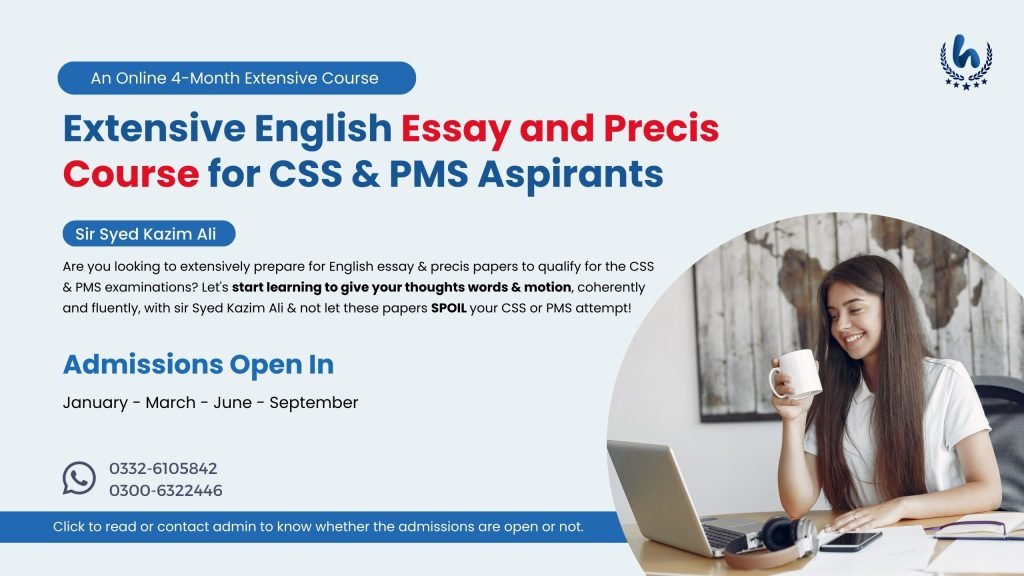
Answer to the Question
Introduction
International relations often resemble theatre play, where some nations take a central role while others play supporting roles. In the case of Pakistan-United States relations, the script has often changed, but the power dynamic has remained the same. Pakistan’s geopolitical position has set the stage for that theatre, where the script is titled The Patron-Client Relation, with the United States as a dominant figure. The patron-client relation is defined as a mutual agreement between two parties, where a patron provides financial or other resources in exchange for services from its client. Here, the patron is the US, providing financial aid to its client, Pakistan, since its inception- in exchange for strategic services. History proves that Pak-US relations have always been based on a give-and-take dynamic to serve their national interests. From the Cold War to the War on Terror, Pakistan as a Client has served its Patron, the United States, strategic interests in the region in exchange for financial aid. The patron-client dynamic has defined Pak-US relations shaping political, military and economic aspects while creating dependency and strategic shift.
Evolution of patron-client dynamics and US-PAK relations
The relationship between Pakistan and the USA never remains the same. In the changing world dynamics, their relations always evolve as per the requirement; meanwhile, the patron-client status has remained constant throughout history. In each phase of history, the national interests of both nations encouraged them to make a Patron-Client relation.
- Early Cold War alignment
During the Cold War, the conflict was between two ideologies, communism and democracy. The USA was against communism and did not want Pakistan to join the USSR, which followed a communist ideology. On the other hand, Pakistan was struggling after its inception and needed strong support to survive as a newly formed state. So, Pakistan entered into The Central Treaty Organization CENTO and Southeast Asia Treaty Organization SEATO, aligning itself with the USA and seeking support against India. Moreover, Pakistan received $508 million in economic aid and $730 million in military aid under agreements signed in 1954 and 1959. This marked the first phase of Patron-Client relations between the USA and PAK.
- Breakdown of Patronage
After the U-2 plane incident, Pakistan shifted its focus, and the USA no longer had any strategic or regional interests in Pakistan. Even though the USA adopted a neutral policy during the 1965 war between Pakistan and India, the absence of mutual interests and strategic services led to a pause in the patron-client relationship during this period.
- Rapprochment & Estrangement
In 1971, Pakistan facilitated Henry Kissinger’s secret visit to China, leading to a rapprochement between the US and China. In response, Pakistan received minimal aid amid the Soviet Union’s growing alignment with India. However, after the 1971 war and the separation of Bangladesh, Pakistan’s pursuit of nuclear development created tensions between the two nations, as the overall situation was not in favor of the patron.
- Shifting during the Afghan War
After two decades, Pakistan-USA relations revived following the USSR’s invasion of Afghanistan. The USA’s concern was to counter another emerging world power and maintain control over global power dynamics. Therefore, the USA rekindled its relationship with Pakistan. At that time, Pakistan feared that the USSR, after invading its neighbour, might target it next, as the Soviet Union aimed to access warm waters through Pakistan. As a result, Pakistan accepted its client role, receiving $3.2 billion in military and economic aid under the Reagan Administration (1981–1987) and strategic support from its patron in exchange for its services against the USSR.
- Sanctions & Strained ties
In response to Pakistan’s nuclear development, the US imposed sanctions under the Pressler Amendment in 1990, which restricted military and economic aid due to Pakistan’s suspected nuclear weapons program. The situation further escalated in 1998 when Pakistan conducted nuclear tests in response to India’s tests, leading to additional sanctions under the Glenn Amendment. During this period, Pakistan aligned itself with the Taliban in Afghanistan, whose regime was not only unrecognized by the US but also seen as a destabilizing force in the region. This alignment went directly against US strategic interests, as Washington was concerned about extremism and regional instability. Consequently, in this unfavourable scenario, the patron-client relationship remained largely diminished, with minimal diplomatic and economic engagement between the two nations until the geopolitical landscape shifted again after 9/11.
- Post-9/11 War on Terror cooperation
The episode of the patron-client relationship between Pakistan and the USA re-emerged after the 9/11 attacks. The USA once again required the services of its client to launch operations against terrorism, particularly in Afghanistan, where the Taliban regime provided sanctuary to Al-Qaeda. Given its strategic location, Pakistan became an essential ally in the War on Terror. With no viable alternatives, Pakistan had little choice but to accept financial and military aid from its patron—the USA—in exchange for logistical and territorial support, including access to airbases and intelligence cooperation. Over $20 billion in aid (2001–2011), including:$14 billion in Coalition Support Funds (CSF) and $4 billion in economic assistance was received by Pakistan. This phase of the patron-client dynamic further deepened Pakistan’s dependency on US assistance while also exposing it to internal security challenges due to its involvement in America’s war.
- Declining Ties & Aid Reductions
The US accusations of Pakistan harbouring terrorists paved the way for declining ties between the two nations. Repeated allegations that Pakistan was supporting militant groups led to a significant reduction in economic aid. In 2018, then-President Donald Trump took a harsh stance, labelling Pakistan’s role in counter-terrorism efforts as ‘deceptive’ and cutting down military and economic aid. Despite the decline in military assistance, the US continued providing civilian aid, allocating approximately $1 billion annually for education and development programs. However, the overall patron-client dynamic weakened as strategic interests diverged, leading to a shift in US priorities in the region.
Contemporary Relations: A Weakening Patron-Client Bond
The US withdrawal from Afghanistan indicated a major shift in its strategic interests, signalling the end of its long-standing need for a client in the region. With its focus turning towards competition with China and Russia on a global scale, South Asia lost its previous significance in US foreign policy. During the first three years of Joe Biden’s presidency, US government departments had minimal engagement with Pakistan, further reflecting the diminishing patron-client dynamic. On the other hand, Pakistan has been making diplomatic moves in pursuit of economic stability and regional influence. It has become more aligned with China through the China-Pakistan Economic Corridor (CPEC) and is strengthening economic and energy ties with Russia, particularly in sectors like oil and defence cooperation. Additionally, Pakistan is actively participating in regional forums such as the Shanghai Cooperation Organization (SCO) to diversify its alliances. Thus, Pakistan has distanced itself from its old patron and is now exploring partnerships with emerging global powers, recognizing the need for a multi-polar approach to secure its economic and strategic interests.
Critical Analysis
The patron-client relationship between the U.S. and Pakistan evolved through three key phases: the Cold War, the Soviet invasion of Afghanistan, and the War on Terror. While Pakistan received economic and military aid, this support came at a cost. By granting the U.S. access to its territory, Pakistan compromised its sovereignty, invited terrorism, and strained diplomatic ties with Afghanistan. Meanwhile, India leveraged the situation to strengthen its regional influence. Though the aid benefited Pakistan’s infrastructure and defence, the long-term consequences created instability. Thus, Pakistan’s patron-client engagement with the U.S. was a trade-off between short-term gains and lasting risks.
Conclusion
To conclude, Pakistan and U.S. relations were truly based on the patron-client pattern as if they were in domestic ties. There were three main eras where the patron-client link was seen at its best: the Cold War era, during the USSR invasion, and the War on Terror. Other than that, the USA even put sanctions on Pakistan. It can be stated that in the whole scenario, the U.S. was only focused on its regional goals that could be achieved through Pakistan, yet it was ready to undermine Pakistan’s steps when they conflicted with its perspective. But once the objective was over, Pakistan’s development, like nuclear development, started irritating it, and it imposed sanctions. Now, they are not in any diplomatic relations. In the future, Pakistan should approach a more transactional relationship rather than patronage-based ties.
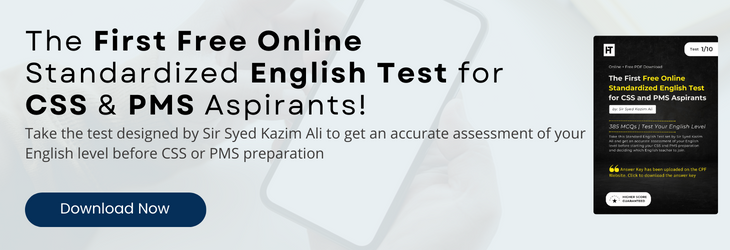
CSS Solved Past Papers’ Essays
Looking for the last ten years of CSS and PMS Solved Essays and want to know how Sir Kazim’s students write and score the highest marks in the essays’ papers? Then, click on the CSS Solved Essays to start reading them.
CSS Solved Essays
CSS Solved Islamiyat Past Papers
Want to read the last ten years’ Islamiyat Solved Past Papers to learn how to attempt them and to score high? Let’s click on the link below to read them all freely. All past papers have been solved by Pakistan’s top CSS Islamiyat coach having the highest score of their students.
CSS Solved Islamiyat
CSS Solved General Science & Ability Past Papers
Want to read the last ten years’ General Science & Ability Solved Past Papers to learn how to attempt them and to score high? Let’s click on the link below to read them all freely. All past papers have been solved by Pakistan’s top CSS GSA coach having the highest score of their students.
CSS Solved General Science & Ability

